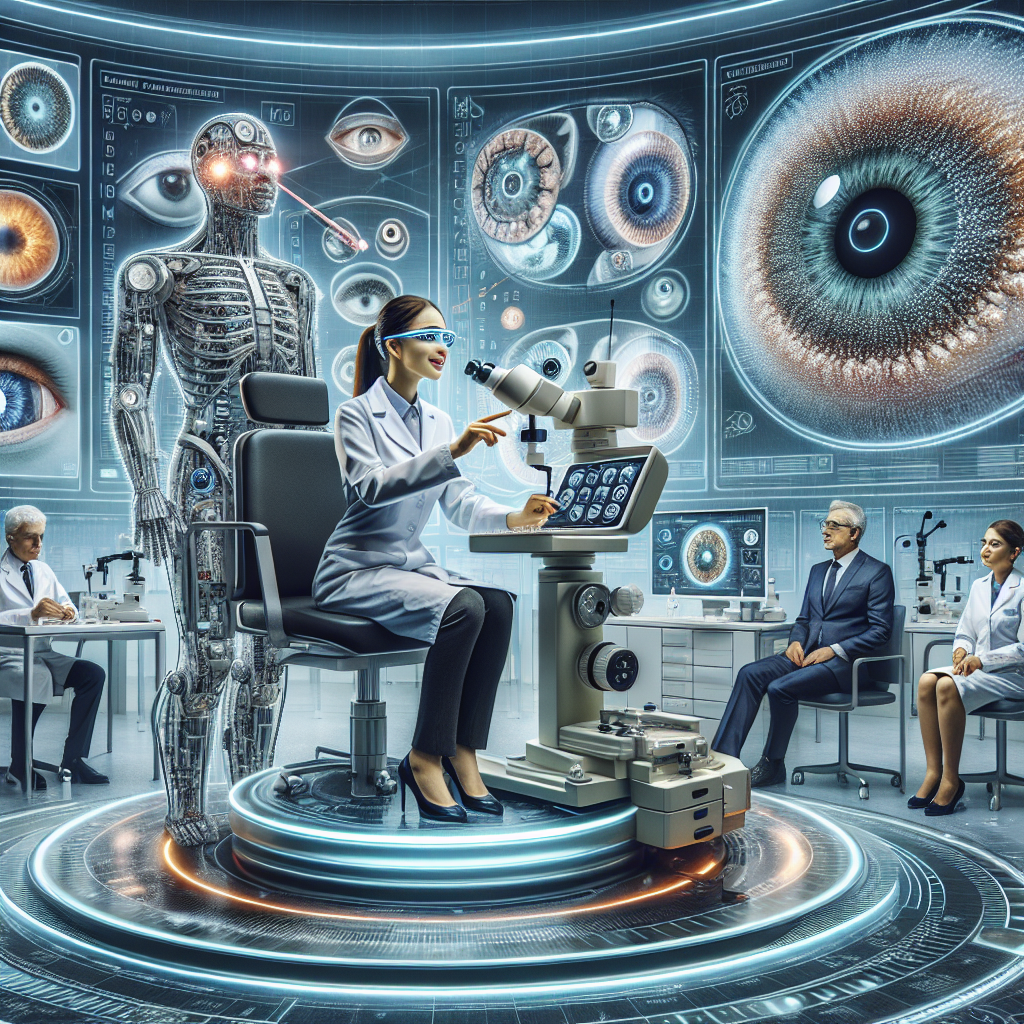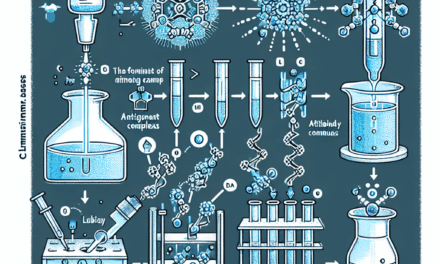Revolutionizing Eye Care: The Role of Artificial Intelligence in Ophthalmology

In recent years, the field of ophthalmology has witnessed a transformative shift with the integration of artificial intelligence (AI). This technological advancement is not only enhancing diagnostic accuracy but also improving patient outcomes and streamlining clinical workflows. As AI continues to evolve, its applications in eye care are expanding, offering unprecedented opportunities to revolutionize the way we understand and treat eye diseases. This article delves into the multifaceted role of AI in ophthalmology, exploring its impact on diagnostics, treatment, patient management, and future prospects.
AI in Ophthalmic Diagnostics
The diagnostic process in ophthalmology has traditionally relied on the expertise of clinicians to interpret complex visual data. However, AI is now playing a pivotal role in augmenting this process, offering tools that enhance precision and efficiency.
Automated Image Analysis
One of the most significant contributions of AI in ophthalmology is automated image analysis. AI algorithms, particularly those based on deep learning, have demonstrated remarkable proficiency in analyzing retinal images. These algorithms can detect and classify various eye conditions, such as diabetic retinopathy, age-related macular degeneration, and glaucoma, with accuracy comparable to that of experienced ophthalmologists.
For instance, a study published in the journal Nature highlighted an AI system developed by Google Health that achieved a sensitivity of 87% and a specificity of 90% in detecting diabetic retinopathy from retinal images. Such systems not only reduce the burden on clinicians but also enable early detection, which is crucial for preventing vision loss.
Predictive Analytics
AI’s ability to analyze large datasets allows for predictive analytics, which can forecast the progression of eye diseases. By examining historical patient data, AI models can identify patterns and risk factors associated with disease progression. This capability is particularly valuable in managing chronic conditions like glaucoma, where timely intervention can prevent irreversible damage.
For example, researchers at Moorfields Eye Hospital in London have developed an AI model that predicts the likelihood of glaucoma progression by analyzing visual field test results. This tool aids clinicians in tailoring treatment plans to individual patients, optimizing outcomes and resource allocation.
Integration with Telemedicine
The integration of AI with telemedicine platforms is expanding access to eye care, especially in underserved regions. AI-powered diagnostic tools can be deployed remotely, allowing patients to receive expert evaluations without the need for in-person visits. This approach is particularly beneficial in rural areas where access to ophthalmologists is limited.
In India, the Aravind Eye Care System has implemented AI-driven teleophthalmology services to screen for diabetic retinopathy. This initiative has screened over 300,000 patients, significantly reducing the burden on healthcare facilities and ensuring timely intervention for those at risk.
AI in Treatment and Surgical Interventions
Beyond diagnostics, AI is making significant strides in the treatment and surgical aspects of ophthalmology. From personalized treatment plans to robotic-assisted surgeries, AI is enhancing precision and outcomes in eye care.
Personalized Treatment Plans
AI’s ability to process vast amounts of data enables the development of personalized treatment plans tailored to individual patient needs. By analyzing genetic, environmental, and lifestyle factors, AI can recommend optimal treatment strategies for conditions like age-related macular degeneration and diabetic retinopathy.
For instance, AI algorithms can predict a patient’s response to anti-VEGF therapy, a common treatment for macular degeneration, by analyzing genetic markers and previous treatment outcomes. This personalized approach minimizes trial-and-error, reducing treatment costs and improving patient satisfaction.
Robotic-Assisted Surgery
AI is also revolutionizing surgical interventions in ophthalmology through robotic-assisted systems. These systems enhance the precision and dexterity of surgeons, reducing the risk of complications and improving surgical outcomes.
The PRECEYES Surgical System, developed by a Dutch company, is an example of AI-driven robotic assistance in eye surgery. This system allows for sub-micrometer precision, enabling surgeons to perform delicate procedures with enhanced control. Clinical trials have demonstrated its efficacy in retinal vein cannulation, a procedure that requires extreme precision.
AI-Driven Drug Discovery
AI is accelerating the drug discovery process in ophthalmology by identifying potential therapeutic targets and predicting drug efficacy. Machine learning algorithms can analyze vast datasets of chemical compounds and biological interactions, streamlining the identification of promising drug candidates.
For example, AI has been used to identify new compounds for treating dry eye disease, a condition affecting millions worldwide. By analyzing existing drug databases, AI models have identified compounds with potential anti-inflammatory properties, expediting the development of new treatments.
AI in Patient Management and Monitoring
AI is transforming patient management and monitoring in ophthalmology, offering tools that enhance patient engagement and adherence to treatment plans.
Remote Monitoring and Wearable Devices
AI-powered wearable devices are enabling continuous monitoring of eye health, providing real-time data to clinicians and patients. These devices can track intraocular pressure, detect changes in visual acuity, and monitor other vital parameters, facilitating proactive management of eye conditions.
The iCare HOME tonometer, for instance, allows patients to measure their intraocular pressure at home, with data automatically transmitted to their healthcare provider. This continuous monitoring helps in the early detection of glaucoma progression, allowing for timely intervention.
Patient Engagement and Education
AI-driven platforms are enhancing patient engagement by providing personalized educational content and reminders for medication adherence. These platforms use natural language processing to deliver information in an accessible and engaging manner, empowering patients to take an active role in their eye care.
For example, the MyEyeCare app uses AI to provide patients with tailored information about their condition, treatment options, and lifestyle modifications. By fostering a better understanding of their condition, patients are more likely to adhere to treatment plans and attend follow-up appointments.
Data-Driven Decision Support
AI is providing clinicians with data-driven decision support tools that enhance clinical decision-making. By integrating patient data from electronic health records, AI algorithms can offer insights into treatment efficacy, potential side effects, and alternative therapies.
At the University of California, San Francisco, researchers have developed an AI-based decision support system that assists clinicians in managing complex cases of uveitis, an inflammatory eye condition. This system analyzes patient data to recommend treatment adjustments, improving patient outcomes and reducing the risk of complications.
Challenges and Ethical Considerations
While AI holds immense potential in revolutionizing ophthalmology, it also presents challenges and ethical considerations that must be addressed to ensure its responsible and equitable implementation.
Data Privacy and Security
The use of AI in ophthalmology involves the collection and analysis of vast amounts of patient data, raising concerns about data privacy and security. Ensuring the confidentiality and integrity of patient information is paramount to maintaining trust in AI-driven healthcare solutions.
Healthcare organizations must implement robust data protection measures, including encryption and access controls, to safeguard patient data. Additionally, compliance with regulations such as the General Data Protection Regulation (GDPR) is essential to protect patient privacy.
Bias and Fairness
AI algorithms are only as good as the data they are trained on. If training datasets are biased or unrepresentative, AI models may produce biased outcomes, potentially exacerbating health disparities. Ensuring fairness and equity in AI-driven ophthalmology requires diverse and representative datasets.
Researchers and developers must prioritize the inclusion of diverse populations in training datasets to mitigate bias. Additionally, ongoing monitoring and evaluation of AI models are necessary to identify and address any biases that may arise.
Regulatory and Legal Challenges
The rapid advancement of AI in ophthalmology presents regulatory and legal challenges, as existing frameworks may not adequately address the unique aspects of AI-driven healthcare solutions. Establishing clear guidelines and standards for the development and deployment of AI in ophthalmology is crucial to ensure safety and efficacy.
Regulatory bodies, such as the U.S. Food and Drug Administration (FDA), are actively working to develop frameworks for the evaluation and approval of AI-based medical devices. Collaboration between regulators, industry stakeholders, and healthcare professionals is essential to establish comprehensive guidelines that balance innovation with patient safety.
Future Prospects and Innovations
The future of AI in ophthalmology is promising, with ongoing research and innovations poised to further transform eye care. Emerging technologies and interdisciplinary collaborations are paving the way for new applications and advancements.
AI and Genomics
The integration of AI with genomics is opening new avenues for personalized medicine in ophthalmology. By analyzing genetic data, AI can identify genetic predispositions to eye diseases and recommend targeted interventions.
For example, AI-driven genomic analysis can identify patients at risk for inherited retinal diseases, enabling early intervention and genetic counseling. This approach holds the potential to prevent vision loss and improve quality of life for individuals with genetic eye conditions.
AI and Augmented Reality
Augmented reality (AR) is being combined with AI to enhance surgical training and visualization in ophthalmology. AR systems can overlay digital information onto the surgical field, providing real-time guidance and feedback to surgeons.
The use of AI-powered AR in ophthalmic surgery is being explored at institutions like Stanford University, where researchers are developing systems that enhance surgical precision and reduce the learning curve for complex procedures.
Collaborative Research and Development
Interdisciplinary collaborations between AI researchers, ophthalmologists, and industry stakeholders are driving innovation in eye care. These partnerships are fostering the development of novel AI applications and accelerating the translation of research into clinical practice.
Initiatives like the AI for Health program by Microsoft are supporting collaborative research projects that leverage AI to address global health challenges, including those in ophthalmology. Such collaborations are essential for advancing the field and improving patient outcomes.
Conclusion
Artificial intelligence is revolutionizing ophthalmology, offering transformative solutions that enhance diagnostics, treatment, and patient management. From automated image analysis to personalized treatment plans and remote monitoring, AI is reshaping the landscape of eye care. However, the successful integration of AI in ophthalmology requires addressing challenges related to data privacy, bias, and regulation. As research and innovation continue to advance, AI holds the potential to further revolutionize eye care, improving outcomes and accessibility for patients worldwide. By embracing these technological advancements, the field of ophthalmology is poised to enter a new era of precision medicine and personalized care.





